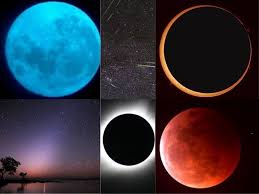The Magic of Lunar Events
Lunar events have captivated humanity for centuries, with their mystical allure and celestial beauty. From the mesmerizing glow of a full moon to the rare spectacle of a lunar eclipse, these events never fail to evoke a sense of wonder and awe.
The Phases of the Moon
The moon’s phases, from new moon to full moon and back again, have long been associated with cycles of change and renewal. Each phase carries its own symbolism and significance, influencing everything from nature’s rhythms to human emotions.
Lunar Eclipses
One of the most dramatic lunar events is a lunar eclipse, when the Earth passes between the sun and the moon, casting a shadow over the lunar surface. This celestial dance creates a breathtaking display of light and shadow, reminding us of the interconnectedness of our solar system.
Supermoons
Supermoons occur when a full moon coincides with the moon’s closest approach to Earth in its orbit. This results in a larger and brighter moon than usual, illuminating the night sky with an enchanting glow. Supermoons are often associated with heightened emotions and spiritual energy.
Blue Moons
A blue moon is not actually blue in color but refers to the second full moon in a calendar month. Blue moons are relatively rare occurrences, adding an element of mystery and magic to the lunar calendar. They have inspired folklore and legends across cultures.
Embracing Lunar Events
Whether you’re gazing up at the night sky during a full moon or witnessing a lunar eclipse painting shadows across the face of our celestial neighbor, lunar events offer us moments of reflection and connection to something greater than ourselves. Let’s continue to marvel at these cosmic wonders that remind us of our place in the universe.
Exploring Celestial Wonders: Understanding Lunar and Astronomical Events
- What are the lunar events?
- What is the rarest celestial event?
- What are celestial events?
- What is the next big astronomical event?
What are the lunar events?
Lunar events encompass a variety of celestial phenomena involving the moon, ranging from its regular phases like the new moon, first quarter, full moon, and last quarter to more rare occurrences such as lunar eclipses, supermoons, and blue moons. These events capture the fascination of skywatchers worldwide, offering opportunities to witness the beauty and mystery of our closest cosmic neighbor. Each lunar event holds its own significance and symbolism, contributing to the rich tapestry of astronomical wonders that continue to inspire awe and wonder in both casual observers and seasoned astronomers alike.
What is the rarest celestial event?
The rarest celestial event is often considered to be a total solar eclipse. During a total solar eclipse, the moon passes directly between the Earth and the sun, casting a shadow on the Earth and temporarily blocking out the sun’s light. This phenomenon is rare because it requires perfect alignment of the sun, moon, and Earth, making it a breathtaking spectacle that captivates observers around the world. Total solar eclipses occur approximately every 18 months somewhere on Earth but are only visible from specific regions, adding to their rarity and mystical allure.
What are celestial events?
Celestial events encompass a wide range of astronomical occurrences that take place beyond our planet Earth. These events include phenomena such as solar and lunar eclipses, meteor showers, planetary alignments, and the phases of the moon. Celestial events offer us glimpses into the vastness and complexity of the universe, allowing us to witness the interplay of celestial bodies and their effects on our lives and surroundings. By observing and understanding these events, we gain a deeper appreciation for the wonders of the cosmos and our place within it.
What is the next big astronomical event?
The next big astronomical event to look forward to is the upcoming total lunar eclipse. During this celestial phenomenon, the Earth will pass directly between the sun and the moon, casting a shadow that gradually covers the lunar surface, creating a mesmerizing display of colors and shadows. This rare event offers sky gazers a unique opportunity to witness the moon as it transitions from its usual bright glow to a stunning deep red hue, known as a “blood moon.” Be sure to mark your calendars and prepare to be captivated by this awe-inspiring display of cosmic beauty in the night sky.

